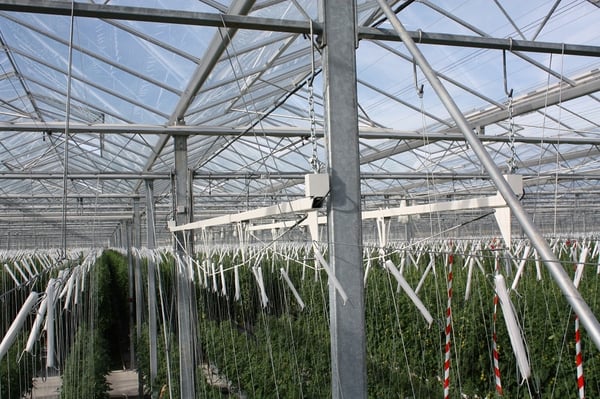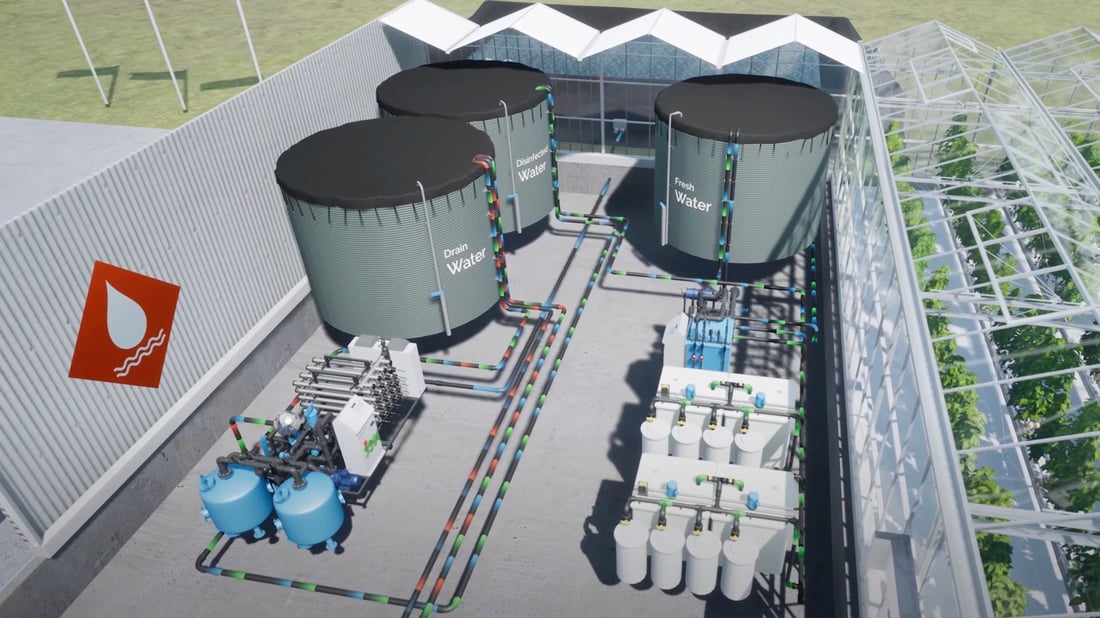Saving money by saving drain water full of fertilizers
When it comes to water, several issues can cause a grower to worry, such as the declining availability of good quality water and the high costs of fertilizers. The recirculation of drain water could significantly alleviate these concerns. In many cases, drain water is still discharged when growers want to get rid of the sodium and other growth inhibitors in their water. Another reason for discharging drain water could be to prevent phytosanitary problems or when the drain water tanks are full.
When new substrates are placed in the greenhouse, the first flush of drain water is often discharged. It is worth reconsidering this, as discharging water is often unnecessary, and drain water can also have a high monetary value. Due to the presence of fertilizers in drain water, a grower, like you, can save a lot of money by reusing it in your greenhouse.
Drain water has a higher EC value
To illustrate: a tomato company that uses 76 m3 of water per hectare for irrigation per day and applies a drain percentage of 30%, will have 23 m3 of drain water per hectare per day. The EC value of drain water is generally 1.5 times higher than the EC value of irrigation water, which means that the concentration of fertilizers is higher in drain water. If irrigation water contains 30% drain water, this drain water will hold about 45% of the initially added fertilizers, including Calcium Nitrate, Potassium Nitrate, Monopotassium Phosphate, Iron and Magnesium Sulphate.
If you express this in monetary terms, you will see that the costs of fertilizers added to irrigation water averages € 15,000 per hectare per year, depending on the crop, in this case tomatoes. Suppose 45% of your fertilizers are still present in your drain water. In that case, that is € 7,000 per hectare per year, which you are now throwing away when discharging your drain water. For a greenhouse of 3 hectares, that is already € 21,000. An amount better spent on other things. Additionally, you will end up using less water by recirculating drain water, which will save you money on water as well.

Drain water discharge standards
Recirculation of drain water is now common practice in Dutch horticulture. The two main reasons are 1, financial gain, and 2, strict drain water discharge regulations. In the Netherlands, when growing crops on substrate, growers are obligated to collect rainwater for high-quality irrigation water and have a recirculation system to collect and reuse drain water. Moreover, since 2018, there has been a purification obligation to remove pesticide residues from discharge water. On top of that, targets have been set to achieve a zero emission of nutrients, particularly nitrogen, in discharge water by 2027.
Due to the lack of such legislation in other countries, many growers do not yet see the need to prevent drain water discharge. After all, you have certain routines, cultivation is going well, and no one is telling you not to discharge your drain water. So why would you change anything? The considerable savings we have mentioned that can be achieved by reusing the water can be an important argument. At the same time, you should be aware that similar purification regulations and rules regarding zero emissions will eventually come into effect in other countries as well. So why wait when you can save money now and comply with the legislation later?
The business opportunities of water fertilizers in your greenhouse
Are you triggered by the potential savings that can be made or overwhelmed by all the different legislations? In our guide: 'The business opportunities of water recirculation in a greenhouse', we explain the principles of water recirculation, outline the main advantages, and explain why it could make sense for you to choose recirculation.
Download and read the guide here.




.png?width=340&name=Landingpage%20Template%20(1).png)
